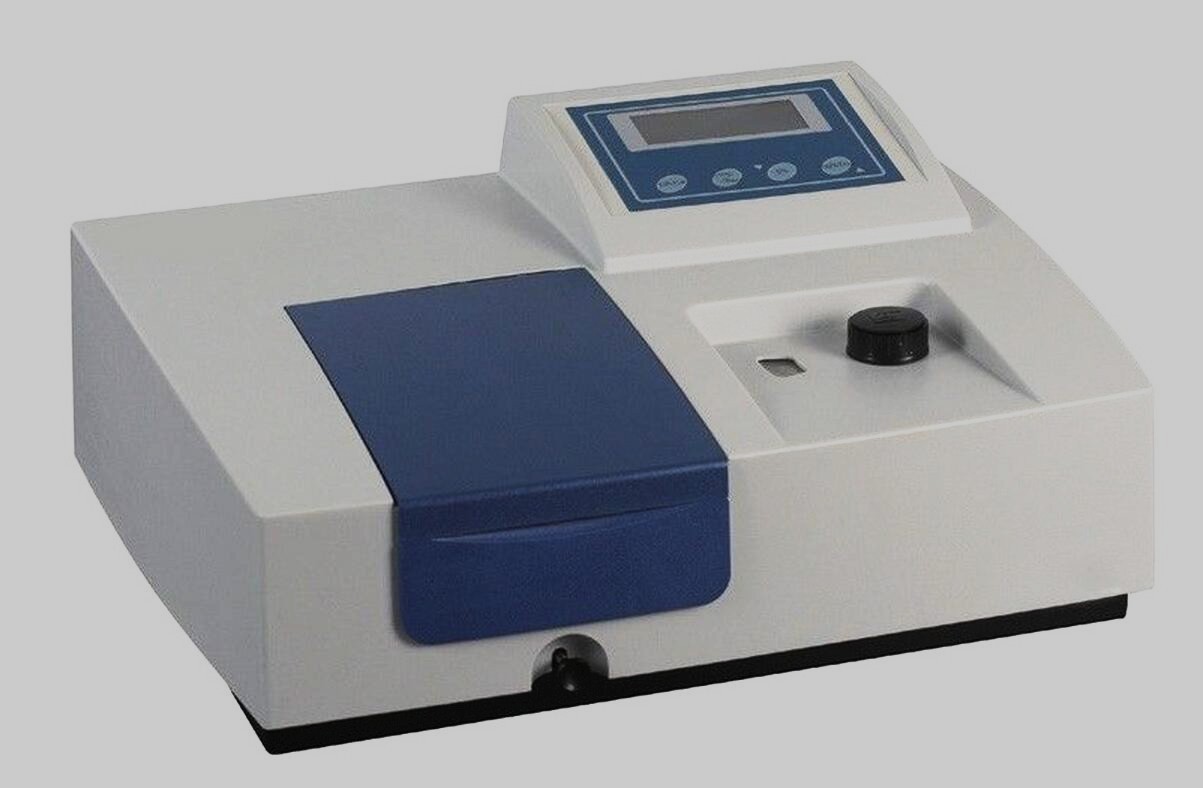
What is a UV-Vis spectrometer? A UV-Vis spectrometer is a device used to measure the absorbance and transmittance of light in the ultraviolet and visible regions of the electromagnetic spectrum. It helps scientists understand the properties of different substances by analyzing how they interact with light. This tool is essential in fields like chemistry, biology, and environmental science. By shining light through a sample and measuring how much is absorbed or transmitted, researchers can identify and quantify various compounds. Whether you're a student, a professional, or just curious, learning about UV-Vis spectrometers can open up a world of scientific discovery.
What is a UV-Vis Spectrometer?
A UV-Vis spectrometer measures the absorbance or reflectance of UV and visible light by a sample. This tool is essential in various scientific fields, from chemistry to biology.
- UV-Vis spectrometers analyze light in the ultraviolet (UV) and visible (Vis) regions of the electromagnetic spectrum.
- The UV region ranges from 200 to 400 nanometers, while the visible region spans 400 to 700 nanometers.
- These devices help determine the concentration of substances in a solution by measuring light absorption.
- They are widely used in quality control for pharmaceuticals, ensuring consistency and safety in drug production.
- UV-Vis spectrometers can identify unknown compounds by comparing their spectra to known standards.
How Does a UV-Vis Spectrometer Work?
Understanding the working principle of a UV-Vis spectrometer can shed light on its importance in scientific research.
- A light source emits UV and visible light, which passes through a monochromator to select a specific wavelength.
- The selected light then passes through the sample, where some light is absorbed.
- A detector measures the intensity of the transmitted light, comparing it to the initial intensity.
- The difference in intensity helps calculate the absorbance, which correlates with the concentration of the sample.
- Beer-Lambert Law is fundamental in UV-Vis spectroscopy, relating absorbance to concentration and path length.
Applications of UV-Vis Spectrometers
UV-Vis spectrometers have diverse applications across various scientific disciplines.
- In environmental science, they monitor water quality by detecting pollutants like nitrates and phosphates.
- Biologists use them to measure DNA, RNA, and protein concentrations in samples.
- Food industry professionals ensure product quality by analyzing color and composition.
- Forensic scientists identify substances in crime scene samples, aiding in criminal investigations.
- In chemistry, they help study reaction kinetics by monitoring changes in absorbance over time.
Types of UV-Vis Spectrometers
Different types of UV-Vis spectrometers cater to specific needs and applications.
- Single-beam spectrometers measure the sample and reference separately, requiring more time for analysis.
- Double-beam spectrometers split the light into two paths, simultaneously measuring the sample and reference.
- Diode-array spectrometers use an array of photodiodes to detect multiple wavelengths at once, speeding up analysis.
- Portable UV-Vis spectrometers offer on-site analysis, useful for fieldwork and remote locations.
- Microvolume spectrometers analyze tiny sample volumes, ideal for precious or limited samples.
Advantages of Using UV-Vis Spectrometers
UV-Vis spectrometers offer several benefits that make them indispensable in scientific research.
- They provide rapid and accurate measurements, essential for time-sensitive experiments.
- The non-destructive nature of UV-Vis spectroscopy preserves samples for further analysis.
- Minimal sample preparation is required, saving time and resources.
- They offer high sensitivity, detecting even low concentrations of substances.
- UV-Vis spectrometers are versatile, analyzing a wide range of samples from liquids to solids.
Limitations of UV-Vis Spectrometers
Despite their advantages, UV-Vis spectrometers have some limitations.
- They cannot distinguish between substances with similar absorbance spectra.
- Samples must be transparent to UV and visible light for accurate measurements.
- High concentrations can lead to deviations from Beer-Lambert Law, affecting accuracy.
- Interference from other absorbing species in the sample can complicate analysis.
- Calibration and maintenance are crucial for reliable results, requiring regular attention.
Innovations in UV-Vis Spectroscopy
Recent advancements have enhanced the capabilities and applications of UV-Vis spectrometers.
- Integration with software allows automated data analysis and reporting, improving efficiency.
- Miniaturization has led to the development of handheld spectrometers, increasing portability.
- Advances in detector technology have improved sensitivity and resolution.
- Coupling with other techniques, like chromatography, expands the range of analyzable compounds.
- Development of eco-friendly, solvent-free methods aligns with green chemistry principles.
Fun Facts About UV-Vis Spectrometers
Some interesting tidbits about UV-Vis spectrometers might surprise you.
- The first UV-Vis spectrometer was developed in the 1940s, revolutionizing analytical chemistry.
- UV-Vis spectroscopy played a crucial role in the discovery of the DNA double helix structure.
Final Thoughts on UV-Vis Spectrometers
UV-Vis spectrometers are more than just lab equipment. They’re essential tools in fields like chemistry, biology, and environmental science. These devices help scientists understand the composition of substances by measuring how they absorb light. From identifying unknown compounds to monitoring pollution levels, UV-Vis spectrometers play a crucial role.
Knowing how they work and their applications can give you a deeper appreciation for the science behind everyday products and environmental health. Whether you’re a student, a professional, or just curious, understanding UV-Vis spectrometers can open up a world of knowledge.
So next time you hear about a new drug, a cleaner environment, or a scientific breakthrough, remember the role UV-Vis spectrometers might have played. They’re small but mighty tools that make a big impact on our world.
Was this page helpful?
Our commitment to delivering trustworthy and engaging content is at the heart of what we do. Each fact on our site is contributed by real users like you, bringing a wealth of diverse insights and information. To ensure the highest standards of accuracy and reliability, our dedicated editors meticulously review each submission. This process guarantees that the facts we share are not only fascinating but also credible. Trust in our commitment to quality and authenticity as you explore and learn with us.
